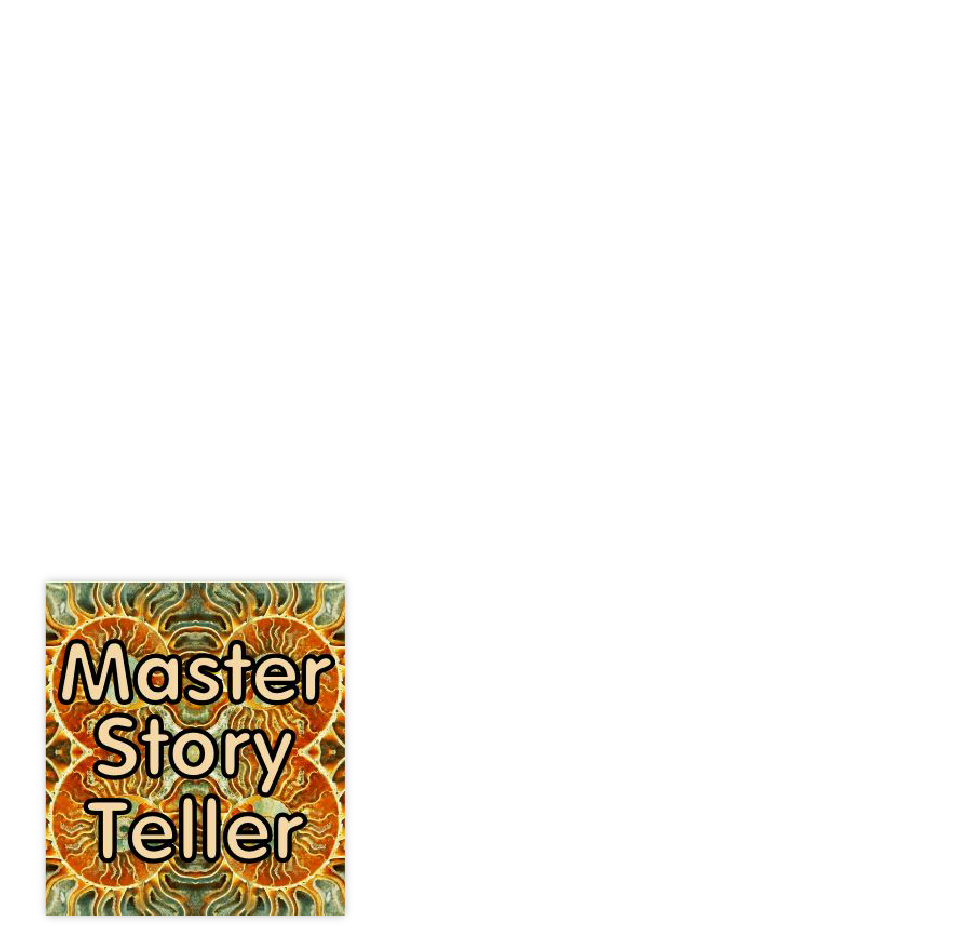





Melanie Anne Phillips
Creator of StoryWeaver, Co-creator of Dramatica, and designer of the Master Storyteller Method.
 Visit Our Store
Visit Our Store
Free, zippo, nada
gratis, on the house
$100 Complete
$100 / Hour


StoryWeaver and Dramatica
Two of the products designed / co-designed by Melanie Anne Phillips.





Copyright © Melanie Anne Phillips. Creator, StoryWeaver ~ Co-creator, Dramatica
Develop your story with…

At this point in the method, I have two different kinds of story consultation clients - those with too many ideas, and those with not enough.
The ones with hundreds of notes find themselves awash in a sea of concepts but can’t seem to pull them together, leaving them drowning in their own creativity.
The ones with barely a notion feel empty, run dry, caught in the Doldrums.
The Master Storyteller Method has a solution for both, and though they are similar, each has a few important differences.
What these two approaches share in common is that they both involve asking questions about your log line.
Whichever of the two situations you find yourself in, our purpose here is to start growing your log line into a thumbnail sketch. What’s that? Think of drawing a portrait. Imagine a kindergartner’s version - a big circle for the face, dots for eyes, and a line for smile. That’s your log line. Now, consider one of those artists who whips out quick caricatures at country fairs and amusement parks. There’s more detail, some shading, yet it clearly is just an impression of the real person, exaggerating some traits and diminishing others. Still, it is reasonable recognizable as the person it was based on. That’s your thumbnail sketch.
The idea is to add material to your log line to give a better impression of your story, but just enough to whet the appetite. It should provide more of a flavor for your story, but not come out as a seven course meal. In fact, you’ll want to limit your thumbnail sketch to just one page in length and not a word more. Why? Because you need to keep the core to your story solid, and if you expand it too fast, you’ll find it is full of holes.
Since the question and answer approach is a bit different for my two types of clients, I’ll start with the client who has too many ideas, as that solution is the most simple. Then we’ll look into what to do about the client who is short of ideas in the next step.
To begin, re-read your log line, and not with just a cursory “okay, did that, what next?” sort of way, but to understand what you actually have there, and more important, what isn’t there. Writers with lots of ideas know their story elements so well that they tend to forget that nobody else does. But whatever isn’t in it, isn’t in it.
Your job now is to ask yourself, “What is the most important thing in my story-in-waiting that isn’t in my log line?” The answer may be a really cool but subordinate character, a nifty bit of action, some atmospheric mood that you want to permeate your story, or perhaps a message or topic or theme you want running barefoot through the fields of the readers’ minds.
Even when dealing with clients in person, I can’t prioritize their story materials for them. Fortunately, you don’t have to rate each aspect, detail or notion against each other. All you have to do is pick one concept about your story that means the most to you that isn’t in the log line. And then you put it in there. Then do it again. Rinse and repeat, simple as that.
BUT - no matter how many wonderful ideas you have, don’t go beyond that one page. I mean it!
In our example log line, “A sheriff in a western town is trying to stop a gang of cutthroats from repeatedly robbing the town blind,” we’ve got that stick-figure portrait of our story at a starting point.
For me, of all the wonderful ideas I have, the most important one that isn’t in my log line is that the story takes place five years after the end of the Civil War.
Why this should be important to me, who knows? But I’m the author, dammit, and what I say goes in regard to the story world in which I live.
So, my task is to work that into the log line in a way that keeps a good narrative flow.
Example 1:
“Five years after the end of the Civil War, a sheriff in a western town is trying to stop a gang of cutthroats from repeatedly robbing the town blind.”
That works. But, it might be a little too packed with information for a single sentence. While a log line must be just one sentence, a synopsis is not bound by that restriction. In fact, if you do your job right, you may end up with a synopsis dozens of pages long and ready to write!
So, let me chop up that long sentence into two.
Example 2.
“It is five years after the end of the Civil War. A sheriff in a western town is trying to stop a gang of cutthroats from repeatedly robbing the town blind.”
As you can see, either way works fine. Now, what is the next most important story point I’d like to see in there? The sheriff is recently divorced and his wife is the leader of the gang.
Okay, so I revise the log line again to read:
“It is five years after the end of the Civil War. A recently divorced sheriff in a western town is trying to stop a gang of cutthroats from repeatedly robbing the town blind. The gang leader is the sheriff’s ex-wife.”
Pretty lame, but it is my story. So, I continue to add material I have floating around until I get:
“It is five years after the end of the Civil War. Ex-Confederate soldier James Vestibule, who was driven off his small farm by carpetbaggers and divorced by his wife, makes his way west to start a new life. Upon arriving at the small Arizona silver-mining town of Bum Strike, he is drawn into a fight with the sheriff, who has been ruling the town with an iron fist. The sheriff is killed, and rather than hanging him, Vestibule is surprised to be offered the job of Sheriff. Times being what they are, he accepts the position, not knowing that an even greater threat has already been plaguing the town for the last six months: A gang of cutthroats rides in every few weeks and makes off with all the refined silver they can find, plus supplies. No sooner has he taken the pledge but the gang returns to the town, and in a standoff, he is shocked beyond reason to discover the gang leader is his ex-wife! She is as shocked as he his and rides her gang out of town. The sheriff mounts a posse and gives chase, leading to a a drawn-out struggle in the wilderness with members of his posse and her gang deserting until only he and she remain. When they finally catch up with each other, he learns that she had been drawn out west by the same dreams they both of having a ranch they had spoken of in their early married years. But when she got there, she discovered the town (under the old sheriff) was hoarding silver from the mines to start a second Civil War against the union. With the tragedies they both had seen, she could not abide a second conflict, wrangled a gang of misfits and kept raiding the town to steal their resources. Upon hearing the truth, he joins her in the quest and together, they force the abandonment of the mines of Bum Strike, rekindle their love and live happily ever after on the ranch they always wanted.”
This is why I teach story development instead of writing my own stories….
The point here is that you need to work in one story point after another in a way that flows grammatically. This can take the some time. If you think you’re Tolkien and have created histories, genealogies, and even new languages, you may be at this for a while.
The ONE BIG KEY to remember is not to try and fold in more than one concept at a time! Seriously. If you stick with one, you can create a thumbnail sketch that flows well and makes sense. If you try to cram in a bunch of things at one, you’ll just recreate the mess you had when you started.
And don’t get all tied up with details. We’re not talking about what each character had for breakfast from the opening scene to the end. What we want are real story points - things that are significant enough to change the course of the plot, our understanding of a character, the true meaning of your message, or to perceptively and palpably alter the mood of the piece.
Each new point is a new revision. Your story begins to take on form as more and more story points are drawn to the narrative attractor of your log line, just like our earlier example of crystals forming around a string dropped into a glass of sugar water. The sugar water is your creativity, the string is the beginning of your structure. The crystals are the perfect blend, the synthesis, the actuality of the combination of creativity and structure for your story.
Naturally, I guide my clients through this part of the process pretty closely with advice such as, “You know, you got the information in but it flows like somebody falling down stairs,” or “Do you really think we need to about his thinning hair at this point - it’s a thumbnail sketch for God’s sake!” Yep - I got me some great bed-side manner for authors of sick stories.
So here’s my summary for this step in the Master Storyteller Method:
If you have a lot of notes, ideas, concepts, desires for your story, pick out the ones that actually have an impact on the course, meaning or mood, fold them into your log line and grow it into a synopsis. Save all the other notions for later.
Now see, that first sentence in the previous paragraph just above was WAY too long. Yes, I criticize my own work as well. I just don’t charge myself.
In the next step, we’re going focus on writers who are short of ideas, and how asking questions about their log lines can give their Muse a kick in the (to be continued)


